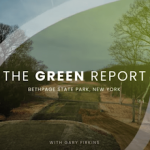
Golf is delivering a powerful and growing contribution to Ireland’s economy, according to landmark research launched today in Dublin by Golf Ireland in collaboration with The R&A.
The study, conducted by the Sport Industry Research Centre at Sheffield Hallam University, reveals that the sport generated €717 million in Gross Value Added (GVA) to the Irish economy in 2023 and directly supported 15,600 jobs across the island of Ireland.
The findings represent a significant increase from previous studies and underline golf’s economic significance through a combination of consumer spending, job creation, tax revenue, and tourism impact.
As one measure, the number of individuals who identify themselves as golfers has increased by 86% from 2014 to 2023, the year to which this detailed study applies.
“Golf is measurable within the context of the entire Irish economy,” said Professor Simon Shibli, Director of the Sport Industry Research Centre. “It accounts for 0.14% of Ireland’s GDP and 14% of the sport industry’s economic footprint. That’s a striking figure for a single sport.”
The research employed a robust methodology used by the European Union to assess the economic impact of sport and included data from a sample of 55 golf clubs out of 377 across the island.
The study provided a comprehensive picture of golf-related expenditures, encompassing everything from green fees and equipment purchases to coaching and tourism.
Total consumer spending on golf reached €703 million, averaging €100 per capita. Club memberships alone generated €143 million, or 20% of all golf spending, indicating sustained popularity and engagement.
Golf also contributed €277.6 million in taxes from consumption, income, and corporate profits, 17 times the amount of government support received by the sector.
“This report highlights golf’s ability to drive economic growth and create employment,” said Mark Kennelly, CEO of Golf Ireland. “Participation has surged by 86% over the past nine years. We are seeing more club members, more casual golfers, and growing interest from people who have never played before.”
He pointed to ongoing efforts to increase accessibility through initiatives like Get into Golf, Unleash Your Drive, and iGolf, as well as targeted promotion of new formats and flexible participation models.
One area of significant growth is domestic green fee income, driven by increased play among non-members.
“This is supporting the viability of our club network, which is absolutely vital,” added Kennelly. “Golf clubs are community hubs and critical infrastructure for participation.”
The research also spotlighted golf’s tourism value. Golf tourists, who often stay longer and spend more than average visitors, are helping fuel a post-Covid recovery in the sector.
With The Open Championship returning to Royal Portrush in July, expectations are high for another major tourism boost.
In 2019, The 148th Open delivered over £100 million (€117 million) in economic benefit to Northern Ireland. This year, The R&A is forecasting a similar impact and maybe more given that Portush has proven it can handle the demands of a global sporting event.
Robert Oxley of The R&A emphasized the importance of such events: “It’s not just the eight days of the championship. Contractors, suppliers, and support staff are already generating months of local economic activity. Events like The Open provide a global shop window for Ireland’s golf offering.”
Looking ahead, there is growing optimism about the potential for The Open to come to the Republic of Ireland for the first time. While no official confirmation has been made, discussions are ongoing between The R&A and the Irish government to explore feasibility.
Kennelly is confident that Ireland has the ingredients for further growth. “We have elite players like Rory McIlroy, Shane Lowry, and Leona Maguire inspiring the next generation. We have world-class courses, strong participation trends, and growing public interest,” he said.
“This report gives us an evidence base to guide investment and policy. It’s not just about maintaining momentum—it’s about building on it.”
Indeed, Golf Ireland’s strategic plan Golf for Everyone aims to harness the sport’s inclusive potential and continue expanding participation, especially among women and underrepresented groups.
The report’s conclusions also highlight that golf represents 8.9% of the GVA attributable to the overall sports sector in Ireland, and 14% of total employment in sport—equivalent to 11,800 full-time roles. When combined with the positive fiscal return to the state, it paints a picture of a thriving, self-sustaining sport with room to grow.
“Golf is one of those sectors that might fly under the radar,” said Shibli, “but this research shows clearly: it’s a heavyweight in economic terms and deserves recognition accordingly.”
The PGA estimates that golf in New Zealand was a $1 billion industry. That would come from sales, professional services, retailing and tourism.
This article was originally published by Sport For Business.










